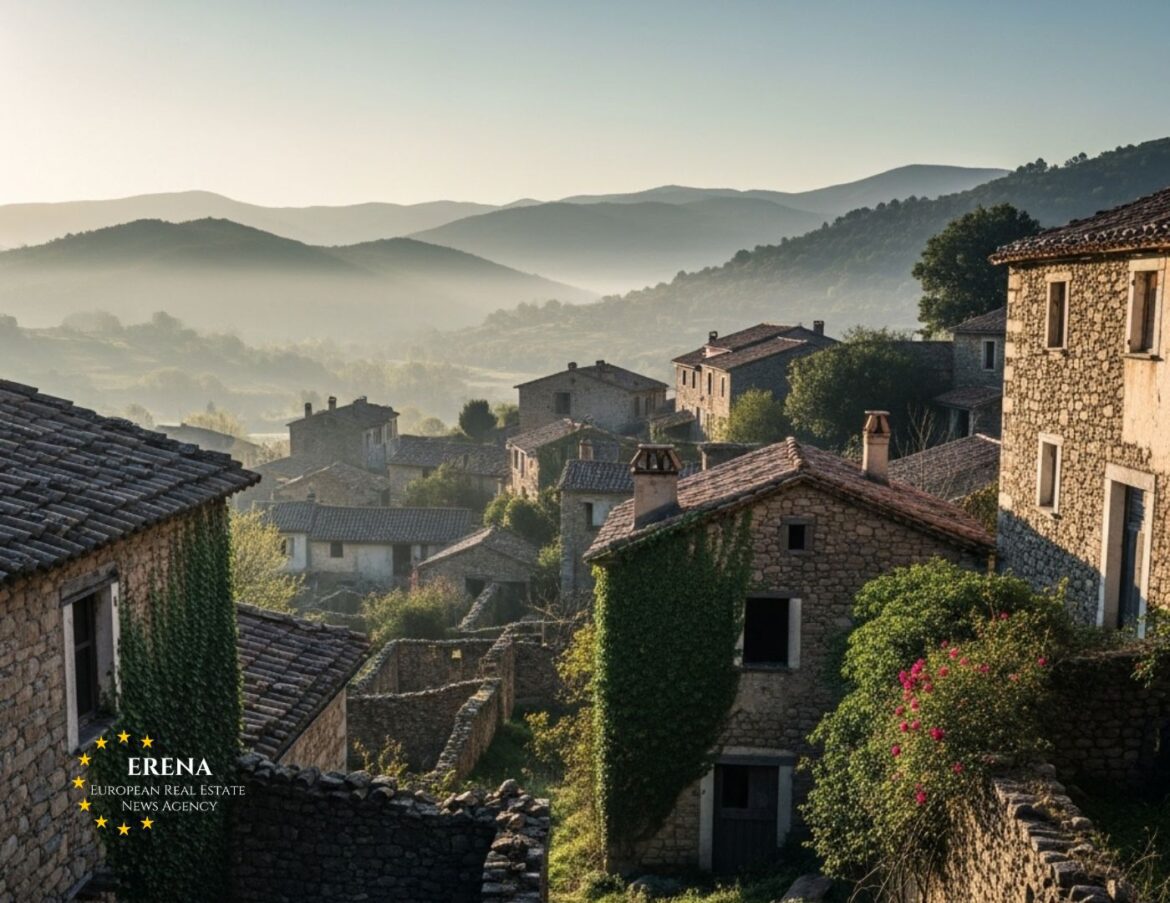Across Europe, abandoned villages are undergoing a quiet transformation. From the sun-drenched hills of Italy to the green valleys of Spain and the rugged landscapes of France, forgotten settlements are becoming focal points of revival — driven by eco-conscious entrepreneurs, digital nomads, and investors seeking purpose beyond profit. These places are being reborn as hubs of sustainability, culture, and modern rural living.
Why Villages Were Abandoned — and Why That’s an Opportunity
Since the mid-20th century, thousands of villages have been deserted due to urban migration, job scarcity, and lack of infrastructure. Yet the rise of remote work, government incentives, and a renewed interest in green lifestyles have made rural repopulation both viable and attractive.
“This is a historic opportunity to restore life to places with deep cultural roots,” says Ursula Lichtenberg, a rural investment consultant specializing in European real estate.
Where to Find Abandoned Villages
Several EU countries actively promote resettlement or redevelopment of depopulated areas. Key regions include:
- Italy – Molise, Calabria, Piedmont, Tuscany (including €1 house programs)
- Spain – Galicia, Aragón, Castile and León (entire hamlets listed for sale)
- Portugal – Alentejo and the mountainous central interior
- France – Depopulated areas in Auvergne, Limousin, and the Pyrenees
- Bulgaria & Romania – Low-cost rural properties with redevelopment potential
Specialized websites such as Idealista, Green-Acres, AldeasAbandonadas, and local agencies list villages ranging from €50,000 to €500,000 depending on condition and location.
Step-by-Step Guide: How to Buy a Village
Step 1: Research and Choose a Location
Key considerations include:
- Structural condition of buildings
- Access to utilities (water, electricity, internet)
- Legal status of land and property
- Local authority support or restrictions
Step 2: Ownership Verification
A major challenge can be fragmented ownership. In many cases, dozens of heirs or distant descendants may have inherited property rights.
“We spent two years tracking down the rightful owners of each building,” says Rafael Cortés, a Barcelona-based investor who purchased a village in Galicia.
Step 3: Legal Purchase
Transactions are typically completed via a notary and require:
- Property transfer tax
- Land registry updates
- Payment of any back taxes or municipal debts
Due diligence is essential, often involving local lawyers and surveyors.
Step 4: Restoration and Planning
Many villages are partially or fully in ruins, with historical preservation laws in place. Buyers should:
- Work with heritage architects
- Submit renovation plans for approval
- Ensure compliance with national building codes
Step 5: Revitalization Strategy
Decide on a long-term use plan. Villages can become:
- Co-housing or eco-communities
- Digital nomad retreats or remote work hubs
- Cultural residencies or artist colonies
- Rural hospitality centers (boutique hotels, glamping sites)
- Educational farms or permaculture centers
Support from Governments and the EU
Several nations offer substantial incentives:
- Italy – Grants of €20,000–€40,000 for rural restoration
- Spain – Subsidies for young farmers, energy-efficient housing
- Portugal – Tax relief and “Rehabilitate to Rent” scheme
- France – ANAH funding for renovation and housing upgrades
EU-wide programs include:
- LEADER & FEADER – Rural cooperation and development
- LIFE Programme – Environmental and sustainability funding
- Horizon Europe – Innovation in sustainable rural living
Case Studies: Villages Reborn
Borgomezzavalle, Italy
The local municipality launched an initiative to sell homes for €1 and offer bonuses to new families. Artists, remote workers, and craftspeople are now among the residents.
Ponga, Spain
Families receive €3,000 to settle in this Asturias village. Some homes have been transformed into eco-tourism lodgings.
Courbefy, France
A once-forgotten village in Limousin was bought by a contemporary artist and is now a thriving cultural center with international events.
Financial Outlook
Typical budget breakdown:
| Expense Category | Estimated Cost (€) |
|---|---|
| Village purchase | 50,000 – 250,000 |
| Legal fees | 3,000 – 10,000 |
| Architectural planning | 10,000 – 50,000 |
| Renovation (per m²) | 800 – 1,500 |
| Infrastructure upgrades | 20,000 – 100,000 |
Revenue and ROI often stem from:
- Eco-tourism operations
- Leasing individual homes
- Hosting retreats or workshops
- Securing regional/EU funding
Voices from the Ground
“We turned the village into a co-living space for remote workers. We have 15 full-time residents, solar power, and a fiber-optic internet line,” says Andrea Bianchi, founder of OffGrid Village in Calabria.
“I was searching for a pottery workshop space. I found a whole village instead. Now it’s an artist residency with regular exhibitions,” shares Emmanuelle Dumont, who runs Village Créatif in France.
Conclusion
Buying and restoring an abandoned village in Europe is no small feat. It requires patience, legal navigation, community engagement, and a vision for sustainable living. But the payoff — culturally, financially, and personally — can be immense.
Whether you’re a dreamer, entrepreneur, or sustainability advocate, these villages offer a blank slate with stories waiting to be written. Europe’s forgotten places are no longer empty—they’re full of promise.

